Camino de Santiago (St James Way)
Guided walk across Northern Spain
May 02 - 11, 2026 (9 nights)
Sept 24 - Oct 03, 2026 (9 nights)
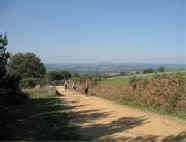 |
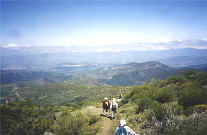 |
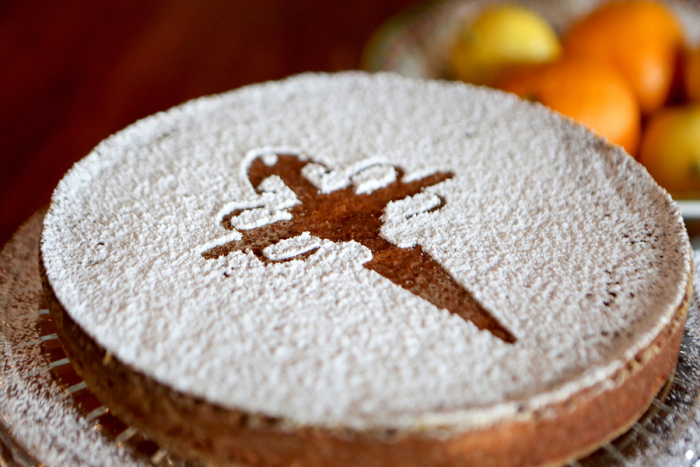 |
9 Night Itinerary :
Getting to Leon:
At least 7 direct trains a day run from Madrid to Leon (about 2.5 hours travel time).
Schedules are only available about two months in advance.
Day 1
- Arrive in Leon,
a remarkable city of soaring stone.
Our hotel in Leon is a lovely restored Posada in the heart of
the historic quarter. Dinner included
Day 2 - Morning walking tour of Leon's old quarter - the magnificent cathedral with stained glass windows preserved from the 13th century, the Basilica de San Isidoro with its Pantheon of Kings filled with golden treasures, the Hostal de San Marcos, the 16th century Palace of Los Guzmanes and the Casa de Botines, a 19th century building by the famous architect Antoni Gaudi. Dinner not included
Day 3 -
ORBIGO TO ASTORGA
This morning we
drive from Leon to start our Camino walk at Orbigo. It was here, on the
bridge at Orbigo, in 1434, that a knight, Suero, held what may
have been the last great medieval tournament. Having been
scorned by his lady love, Suero challenged other knights to a
joust. Today, if you stand on the bridge and use a little
imagination, you can almost hear the horses whinny and the clash
of steel. The tournament is still re-enacted each year by the
people of Orbigo. As we start to walk, the terrain changes from
flat plains to low foothills. The clouds ahead soon reveal
themselves to be chains of mountains in the distance but the
walking is still quite easy. In the afternoon we reach Astorga
with its Cathedral built in 1471 and a fairytale Bishop's Palace
designed by the eccentric architect Antoni Gaudi which now holds
an interesting "Museum of the Camino". There is a baroque Town
Hall and a Museum of Chocolate. The museum tells the tale of the
local chocolate industry which flourished when cocoa was first
brought to Spain from the New World. The town still prides
itself in its great chocolate and there are many mouth-watering
window displays.
Distance 20 km or 12 km (you choose) Dinner included
Day 4 -
ASTORGA TO VILLAFRANCA Beyond Astorga we begin one of the most
historically important parts of the Camino over Mount Irago. Our
bus takes us up as far as Foncebadon and from here we ascend to
the Cruz de Ferro (iron cross) under which pilgrims placed a
stone which they had carried from home as penance. It is
uphill but those who want to avoid the ascent can take the bus
to near the top. The surrounding terrain is rugged but with
lovely views and in spring the wildflowers are gorgeous. From
the top we descend gradually into the lush Bierzo valley and
along the way pass through the village of El Aciebo which
appears to be lost in a time-warp from the Middle Ages. We
continue down to the beautifully restored old town of
Molinaseca with its Roman bridge. Our reward at the end of the
day is staying at the lovely Parador at Villafranca with its
heated pool and spa. Villafranca is one of the most atmospheric
towns on the Camino and retains much of its medieval and
Renaissance atmosphere. In medieval times if a pilgrim was too
frail to continue his journey and stopped here the same papal indulgences were
granted as if he had reached Santiago. (of course he still
had to turn around and walk home) Distance
20 km or 12 km (you choose) Dinner included
Day 5 -
SARRIA TO PORTOMARIN
From Villafranca
we have a short bus ride up the Cebreiro pass and stop to visit
the hamlet of OCebreiro. Legend says that the Holy Grail (the
cup from which Christ drank at the Last Supper) is hidden at
OCebreiro (although many other places in the world make the same
claim). This is one of the most scenic stretches of the Camino.
The terrain is wild and rugged but then we descend into the
beautiful region of Galicia. Gray and green tones predominate
and one hears the "Gallego" language (local dialect). Villages
are strung along this part of the Camino - sometimes just a few
houses surrounding a stone church. Fields are fenced with stone
and brambles and one sees the ruins of castles that once
protected pilgrims. We begin today’s walk
at
the official 100 km mark near Sarria
and from here we walk to the village of Portomarin. In 1963,
during the dictator Franco’s era, the old town of Portomarin was
moved stone by stone from the valley to a hill to make way for a
reservoir. This was one of many of Franco's
improvement schemes (he was from Galicia) but nothing really succeeded until the revival
of the Camino. We stay at the Pousada de Portomarin overlooking
the lake and after dinner we sample. a "queimada" (a
flaming liqueur with sugar, lemon and coffee beans) and hear the
local ghost legend associated with the drink. Don't worry about
ghosts keeping you awake - if you sample a gueimada
you are guaranteed to sleep well.
Distance 19 km or 12 km (you choose) Dinner included
Day 6
-
PORTOMARIN TO PALAS DE REI We follow a tranquil, hamlet-laden
trail through gently rolling countryside to Palas de Rei. The trail
winds alongside jewel-like green fields and between stone fences covered
with blackberries and wild-flowers. In
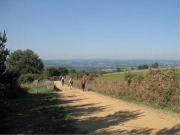 spring
the gorse is brilliant yellow and beautifully scented. In the
surrounding fields one sees "horreos" (granaries) and farmers using
agricultural methods that have changed little for centuries. On reaching Palas de Rei our bus takes us on a
short side-trip to the interesting town of
Lugo where we stay. Lugo is a UNESCO World Heritage Site with Roman
walls surrounding the town.
23 km or 12 km (you choose)
Dinner included
spring
the gorse is brilliant yellow and beautifully scented. In the
surrounding fields one sees "horreos" (granaries) and farmers using
agricultural methods that have changed little for centuries. On reaching Palas de Rei our bus takes us on a
short side-trip to the interesting town of
Lugo where we stay. Lugo is a UNESCO World Heritage Site with Roman
walls surrounding the town.
23 km or 12 km (you choose)
Dinner included
Day 7
- PALAS DE REI TO ARZUA In
the morning we return to
Palas de Rei to continue walking. The trail is easy with no long ascents
or descents. Those interested in local legends learn that this stage is
dominated by St Julian. Legend says that Julian was tricked by the devil
into killing his parents. To atone for his sin he ran a pilgrim hospital
and the church of San Julian do Camino illustrates the story. But the
Camino need not be just about saints or history. The next town of Melide has
shops, bars and restaurants scattered along the narrow streets. Melide
is famous for its "pulpo" (octopus cooked in it’s own juice in large
copper pots and sprinkled with paprika). If octopus for lunch doesn't
appeal, this region is also known for its wonderful cheeses made from
the milk of Galician cows that graze on the lush grass.
From Melide to Arzua
sections of the Camino are
on
farm tracks and occasionally
we may have to wait while a farmer
herds his cattle across the path. Enterprising farm wives often sell
fresh-picked fruit and home-made sugar-coated pancakes to
passers-by. The trail passes through oak and eucalyptus forests that
offer both shade and a lovely fragrance. When we reach Arzua our bus
awaits and we return for the night to our hotel at Lugo. If there is
time you may want to try a dip in Lugo’s natural hot spring pools or try
walking atop the old Roman wall..
Distance 29 km or
less for those who are not trying for the Compostela certificate
Dinner not included
Day 8 -
ARZUA TO RUA On the trail from Arzua to Rua we pass fields, oak groves
and small hamlets with bars catering to walkers. One enterprising local
brewer has even labelled his beer “Pilgrim Beer” in several languages.
The trail is undulating so there are some low hills but nothing steep or
difficult.
Distance
19 km or less for those who are not trying for the Compostela
certificate Dinner included
Day 9 -
RUA TO SANTIAGO Almost there! We are now on the
last stage of the Camino from Rua to Santiago. The Galician
countryside is fragrant with forests of eucalyptus and pine. By
mid-afternoon we approach Santiago and the Camino leads us to
the "Mount of Joy" where pilgrims first caught a glimpse of
Santiago Cathedral’s bell towers.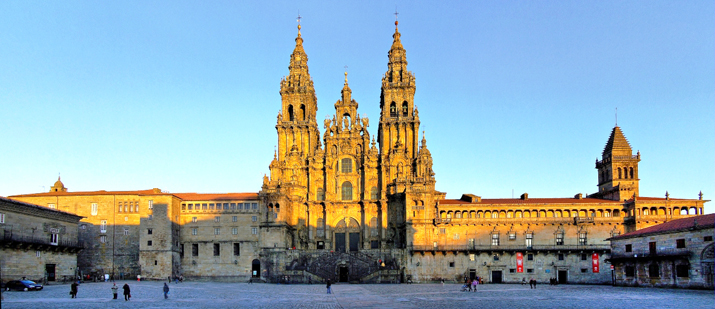
Tradition says that the first one of a group to arrive at the
top of Mount Joy was nicknamed Leroy (The King). Pilgrims also
stopped to wash at Lavacolla (probably the first time in months
since in the 1100's soap and water were considered unhealthy).
We head for Santiago’s main square and the Cathedral, collect
our certificates, have a quick tour of the historic Cathedral
then check into our lovely hotel in the old quarter
Distance 19 km or
less for those who are not trying for the Compostela certificate
Dinner included
Day 10 - Our Camino experience ends after breakfast. Optional extra nights in Santiago can be booked so you can explore the city’s historic sites and narrow medieval streets filled with shops and cafes. Galician cuisine is known for its wonderful sea-food and its many varieties of local cheeses. You might want to take a local bus to Finisterre (end of the earth) which was the traditional sea-side end to the Camino. Here, pilgrims of old picked up a shell as a souvenir before they began the long walk home. Fortunately in the 21st century you don't need to walk home - there are planes or trains from Santiago to Madrid or buses to Porto.
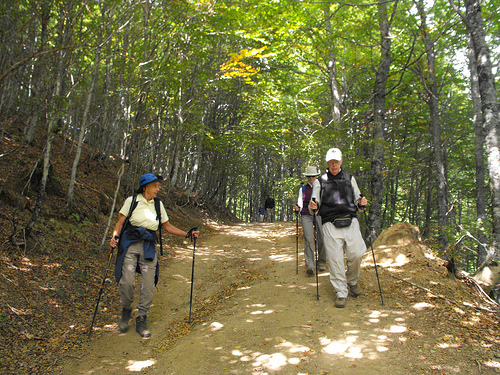 |
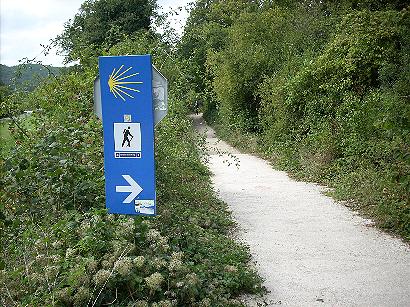 |
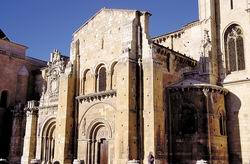 |